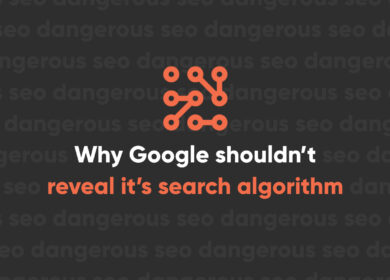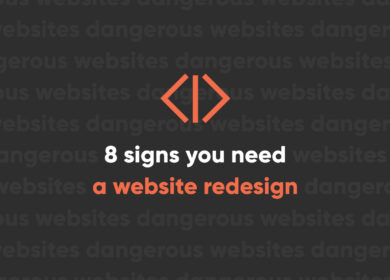
Redesigning Your Website? Know These Things Before You Start

You’re tired of having an ugly old website. So let’s start the redesign!
Not so fast. Before you can start working on that brand new web design, there are a few important things you need to know. Otherwise, your new website will be misguided and won’t help you achieve those business goals.
If you don’t want that new site to be a bust, here’s what you need to know before embarking on a redesign:
Your Target Customer
Your website needs to reach your customer. If you don’t know who your customer is, you won’t be able to reach them. A web designer’s job isn’t just to sit down and make your website look pretty. A website has to be designed with specific purpose in mind. The more you can tell your designer about your customers, the better your designer can build the site for your customer. Every piece of your website should have your target audience in mind. Remember, you aren’t designing the site for you. You’re designing it for the people who are going to use it.
So what do you need to know about your customer? As much as you can, including:
- Age, gender, interests
- Online behavior
- Technology, including preferred browsers and devices
You can get most of the information you need about your customers by looking at your analytics data and demographics reports. Oh, and you could also do something crazy like ask them.
Your Current Weaknesses
The most common reasons a business decides to redesign a website are:
- They don’t think their current website looks good anymore
- A competitor just launched a new website
- They think their current website isn’t working as well as it used to
None of these are bad reasons to redesign. That third reason is especially good. But if you don’t know what isn’t working on the existing site, then your new website may very well experience the exact same problems. To determine your current website’s weaknesses, use a combination of data analysis and user testing. See where people are dropping out of the checkout process. Find the pages where people are leaving your website without converting. Check with your customer service team to see what complaints and struggles your customers have brought up regarding your website. Don’t just make assumptions about what’s broken or what will work better. Just because your new site is pleasing to the eye doesn’t mean it will make your visitors rush to convert.
Your Top-Performing Content
When it’s website redesign time, many businesses want to start over from the beginning. Others want to hold onto everything and just make cosmetic changes. Both of these approaches can be dangerous. There’s a good chance that you do have some strong existing content that’s driving conversions. But you probably also have some junk that’s driving customers away. The important thing is to figure out what’s working and what isn’t. Why start over when you have great content that’s ranking well in search and pushing people to the cart?
When considering your content, you want to look at everything you can. This includes:
- The copy on your pages
- Your calls to action
- Your images and videos
- Your contact forms and/or checkout process
A new website doesn’t have to be a clean slate. You aren’t reinventing any wheels here. Instead, you’re making what you have better.
Your Website Goals and KPIs
What do you want to achieve with your website? If your goals are simply "more sales" or "more leads," then you need to rethink things. The more specific you can be with your goals, the better. Something like "I want to increase sales by 15% within one year" is much more meaningful than "Hey, I want to sell a bunch more stuff." If you don’t know what your goal is, you’ll never know if your new website was worth it. Having specific goals and key performance indicators will also help in the actual design process by giving your designers specific focal points. If your designer doesn’t know that you want to get people to request quotes, then your new website isn’t going to make people request quotes. Just make sure your goals are reasonable. A new website isn’t going to push your conversion rate from 2% to 97%.
Your Marketing and Measurement Plan
A new website in itself isn’t some golden ticket that guarantees success. If you don’t have a plan for marketing the new site, then you won’t achieve your goals. No matter how great your site looks, people won’t buy from you if they can’t find it. And they won’t buy just because the site looks pretty either. You need to market to the right audience, and you need to have a plan for testing and adjusting your site to increase conversions. Which also means you need to know how you’re going to measure your successes—and your failures. Too many business owners make the mistake of thinking a website is finished when it launches. The truth is, a website is never finished. Top-performing websites have a shelf-life of only a couple years before they need a brand new design, but those sites are constantly in data collection and test mode. And when they do decide to redesign, you better believe they use data to drive their decisions.
Web design is not just an art form. It’s also a science. In order to create a website that works, you have to know a lot more than what looks good. In many cases, a brand new website design will be a boost for your business—but only if you put some thought into it.

Nate Tower
Nate Tower is the President of Perrill and has over 12 years of marketing and sales experience. During his career in digital marketing, Nate has demonstrated exceptional skills in strategic planning, creative ideation and execution. Nate's academic background includes a B.A. with a double major in English Language and Literature, Secondary Education, and a minor in Creative Writing from Washington University. He further expanded his expertise by completing the MBA Essentials program at Carlson Executive Education, University of Minnesota.
Nate holds multiple certifications from HubSpot and Google including Sales Hub Enterprise Implementation, Google Analytics for Power Users and Google Analytics 4. His unique blend of creative and analytical skills positions him as a leader in both the marketing and creative worlds. This, coupled with his passion for learning and educating, lends him the ability to make the complex accessible and the perplexing clear.
Join Our Newsletter


Why Google Shouldn’t Reveal Its Search Algorithm


8 Signs You Need a Website Redesign


